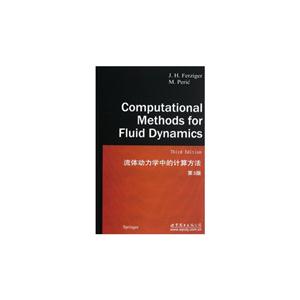-
>
宇宙、量子和人类心灵
-
>
(精)BBC地球故事系列-星际旅行
-
>
从一到无穷大
-
>
图说相对论(32开平装)
-
>
一本有趣又有料的化学书
-
>
刘薰宇的数学三书:原来数学可以这样学全3册
-
>
光学零件制造工艺学
流体动力学中的计算方法-第3版-(影印版) 版权信息
- ISBN:9787510048012
- 条形码:9787510048012 ; 978-7-5100-4801-2
- 装帧:一般胶版纸
- 册数:暂无
- 重量:暂无
- 所属分类:>
流体动力学中的计算方法-第3版-(影印版) 本书特色
弗兹格编著的《流体动力学中的计算方法(第3版)》内容介绍:computational fluid dynamics, commonly known by the acronym‘cfd’,is undergoing significant expansion in terms of both the number of courses offered at universities and the number of researchers active in the field. there are a number of software packages available that solve fluid flow problems; the market is not quite as large as the one for structural mechanics codes, in which finite element methods are well established. the lag can be explained by the [act that cfd problems are, in general, more difficult to solve. however, cfd codes are slowly being accepted as design tools by industrial users. at present,users of cfd need to be fairly knowledgeable, which requires education of both students and working engineers. the present book is an attempt to fill this need.
流体动力学中的计算方法-第3版-(影印版) 内容简介
本书全面讲述了用计算机解决流体力学问题的技巧。书中详述了能用到的所有技巧,包括计算流体力学中的高级技巧,比如湍流的大漩涡模拟、多格方法、平行计算、移动格、结构、块结构和非结构边界适用格,自由曲面流。并且增加了两部分,分别讲述网格质量和离散方法。也讲述了多种不同方法的一般根和基本原理。书中包括了对编码开发人员和应用人员的大量建设性意见,同样也适用于初学者和专家。并且详细处理了数值精确性,估计和数值误差的减小等问题。目次:流体流动的基本概念;数值方法引入;有限差分方法;有限体积方法;线性方程系统解;非平稳性问题方法;Navier-Stokes方程解;复几何;紊流;可压缩流;效率和精度改进;特别问题。
流体动力学中的计算方法-第3版-(影印版) 目录
- >
企鹅口袋书系列·伟大的思想20:论自然选择(英汉双语)
企鹅口袋书系列·伟大的思想20:论自然选择(英汉双语)
¥6.3¥14.0 - >
罗庸西南联大授课录
罗庸西南联大授课录
¥13.8¥32.0 - >
我与地坛
我与地坛
¥16.8¥28.0 - >
新文学天穹两巨星--鲁迅与胡适/红烛学术丛书(红烛学术丛书)
新文学天穹两巨星--鲁迅与胡适/红烛学术丛书(红烛学术丛书)
¥11.0¥23.0 - >
大红狗在马戏团-大红狗克里弗-助人
大红狗在马戏团-大红狗克里弗-助人
¥3.3¥10.0 - >
名家带你读鲁迅:故事新编
名家带你读鲁迅:故事新编
¥13.0¥26.0 - >
诗经-先民的歌唱
诗经-先民的歌唱
¥15.1¥39.8 - >
有舍有得是人生
有舍有得是人生
¥19.4¥45.0
-
2022图书×抽奖盲袋
¥9.9¥25 -
2023读书月阅读盲盒——天黑,闭眼,刀谁?
¥42.3¥158 -
2022读者节纪念徽章-三星会员专属
¥45¥45.6 -
2023读书月阅读盲盒——我什么场面没见过?
¥42.3¥158 -
2023读书月阅读盲盒——去码头整点什么薯条?
¥42.3¥158















